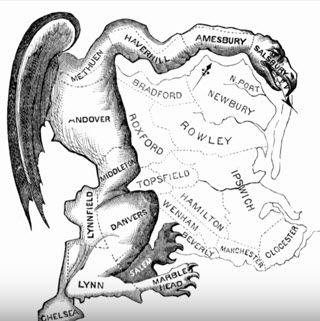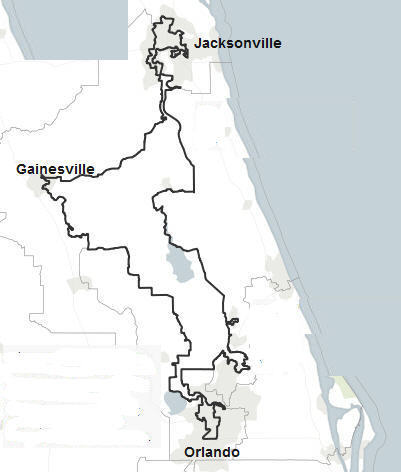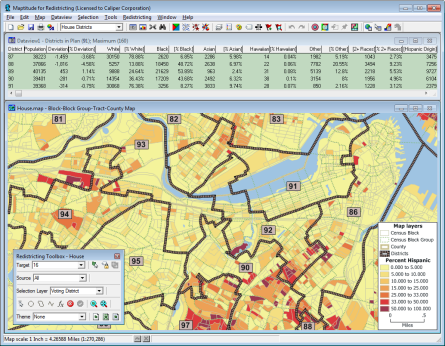Will Your Vote Count in the Coming Election?
Jan 9 2012In parallel with re-engineering voting laws are the groups — Democrat and Republican — fighting for or against changing the electoral map. Once every ten years, based on the population census, every state must reconfigure its voting districts, first to conform to the number of congressional representatives its newly-counted population permits, and then to arrive at approximately equal numbers of voters in each district. That upheaval gives either party the opportunity to redraw districts to lock out the other party.
The goal is, on the one hand, to draw a boundary around neighborhoods that vote for your own party to guarantee that your candidate will be elected, state and federal, or, on the other hand, to cordon off the maximum of voters from opposing groups into as few districts as possible to minimize the number of legislators from their party.
There’s nothing new about this practice. Called gerrymandering, the word derives from 
The 1812 cartoon in the
the shape of one of Gov. Gerry's contrivances.
1812’s governor of Massachusetts, who rearranged election districts to his liking, the contorted shape of one of them resembling a salamander.
CNN offers North Carolina as example in this report, where district lines were drawn so as to corral 49% of all the state’s African-American voters into just three of the state’s 13 electoral districts, leaving the remaining districts mostly white (and Republican). Such maneuvering has lasting consequences. The districts do not change until the next census ten years away.
The last 10 years demonstrate: only 22% of the seats in the House of Representatives changed hands during the entire decade. In California, a
Gerrymandered district in Florida, where areas are strung
together by a connection no wider than a road to 'capture' the
African-American population and "bleach" the surrounding area.
single seat out of 53 switched party control during those years. For the decade to come, only California has turned over redistricting to an impartial board.
Redistricting is complex, and as one might expect, software companies have obliging created the tools for apportioning voters to districts. This company is one of several.
Sample output from Maptitude redistricting software.
What is lamentable is that the same software logic could be used to rid us of gerrymandering for good. Beginning by dividing a state into the nearest to equal size rectangles that irregular borders permit, each area could then be repetitively adjusted in shape and size — with no regard whatever to political parties and ethnic groups — until optimally equal populations occupy each district. Job done.
So where does this leave you? Whereas you may satisfy the new voter eligibility laws as they come into being, in our distorted democracy, your vote may not count at all if you live in a district rigged to be guaranteed for the political party you disfavor.
Please subscribe if you haven't, or post a comment below about this article, or
click here to go to our front page.

